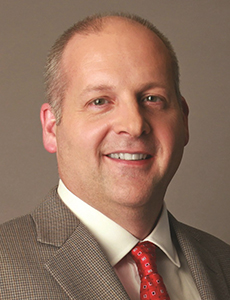Diversity & Inclusion Applies to Wellness Programs Too. Here Are Some Workplace Standards to Consider
If the COVID-19 pandemic has taught us anything, it’s reinforced that America is far from the equitable and just country it claims to be.
More than a year into the pandemic, statistics show that while the virus does not discriminate, its impact is disproportionate, and the way we help those who are at increased risk of getting sick or those who fall ill is, indeed, discriminatory.
In fact, the Centers for Disease Control and Prevention (CDC) states that long-standing systemic health and social inequalities have put many people from racial and ethnic minorities at increased risk of getting sick and dying from COVID-19.
According to the CDC’s Racial Data Tracker, Black Americans have died at 1.4 times the rate of white Americans.
Moreover, long before COVID was on the horizon, longstanding forces of inequity, such as redlining, a crumbling public-school system, and other social determinants of health, have driven a chasm in health care outcomes between white Americans and people of color.
In 2018, for example, Black Americans were 30% more likely to die from heart disease than non-Hispanic whites, according to the U.S. Department of Health and Human Services Office of Minority Health.
Where you live, where you work and how much privilege you are afforded is more often than not determined by the color of your skin, which as statistics have shown, has a direct correlation with your risk of contracting the virus and the chances that you’ll recover from it.
In fact, according to the Center for Economic and Policy Research, four-in-10 frontline workers are Black, Hispanic, Asian-American/Pacific Islander and Indigenous.
While this shouldn’t be surprising to anyone who eats at fast food restaurants, relies on the city bus or sends their kids to day care, what is surprising is the fact that many of these workplaces have failed to provide workplace wellness programs that actually cater to the diverse needs of their workforce.
Instead, workplace wellness programs have unwittingly deepened the racial divide by providing programs that benefit those who are already imbued with wellness privilege or have access to resources that enable better health.
If we as a society want to create a more just and equitable country, one of the first steps we need to take is to make workplace wellness work for everyone — including people of color.
So, what can we do to fix it?
It Cannot Be a “One-Size-Fits-All” Approach
The first step is to acknowledge that the vast majority of workplace wellness programs are inadequate to meet the needs of a multicultural workforce. This is particularly concerning given the push by employers to build an inclusive workplace in the name of productivity.
What’s required is a cultural retooling of resources, such as Employee Assistance Programs (EAPs), or work-based counseling and other services to assist employees dealing with personal or work-related issues.
Too often, these well-intended services are one-size-fits-all programs that are not culturally appropriate for a diverse workforce and therefore are underutilized by a company’s Black, Indigenous and/or people of color (BIPOC) employees.
Companies need to pay attention to the historical factors that have led BIPOC individuals to be less likely to seek treatment than other groups because of stigma, cultural mistrust toward health care providers and a lack of access to culturally responsive care.
The time is now to institute a seismic shift in how workplace wellness is conceived and delivered.
Check-the-box wellness solutions provided by outside vendors with little awareness of internal nuances need to be replaced by more organic efforts that are multidisciplinary, more far reaching and frankly, require more hard work.
Following the lead of companies like Deloitte, well-being efforts should be paired with diversity, equity, inclusion and social justice (DEIS) initiatives to better carve out safe spaces for BIPOC employees to discuss their physical and mental health concerns.
Well-being for all means hiring and promoting BIPOC employees to provide new role models within the workplace who are more representative of an increasingly diverse population.
On a broader level, companies need to re-orient their efforts from individual-oriented employee wellness programs to ones that more meaningfully address deeper, organizational and even societal issues.
Workplace Wellness Programs Need to Be Organizational Commitments
For too long, workplace wellness programs have churned out solutions like questionnaires, walking challenges, subsidized gym memberships or mindfulness classes that urge the individual to take personal responsibility and do little to address organizational problems.
At the same time, companies also need to call out and address the deeper issues that disproportionately impact communities of color, such as unstable housing, food deserts, scarcity of green spaces and lack of economic opportunities.
Bank of America is leading the way in taking a big-picture, large-scale approach to do just that with its recent $1 billion commitment to advance racial equity within local communities.
As the pandemic and aftermath of the tragic murders of George Floyd, Breonna Taylor, Daunte Wright and so many others have laid bare, all of our efforts to promote better health and well-being, whether in the workplace or elsewhere, must be reframed in the context that racism is a public health crisis that must be addressed head on.
In today’s multicultural society, building a diverse and inclusive workforce is paramount to a business’s success, not to mention our nation’s success.
As part of this effort, companies need to create workplace wellness that works for everyone — including people of color. &










